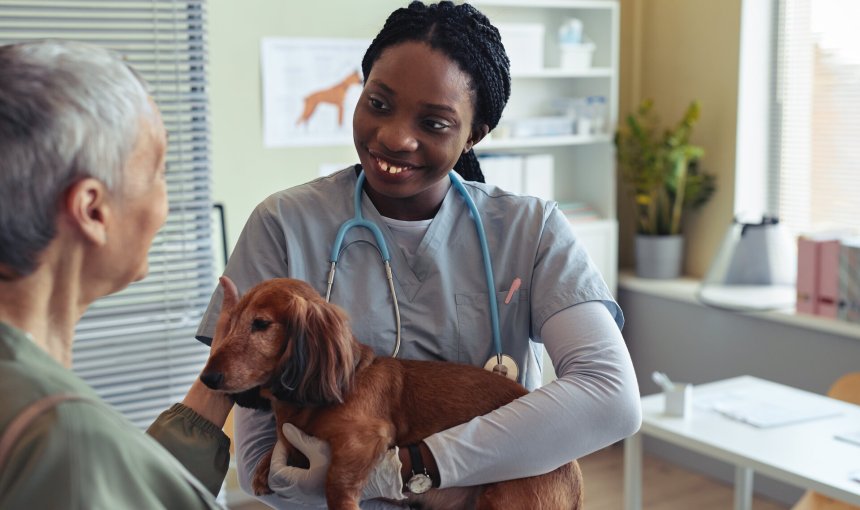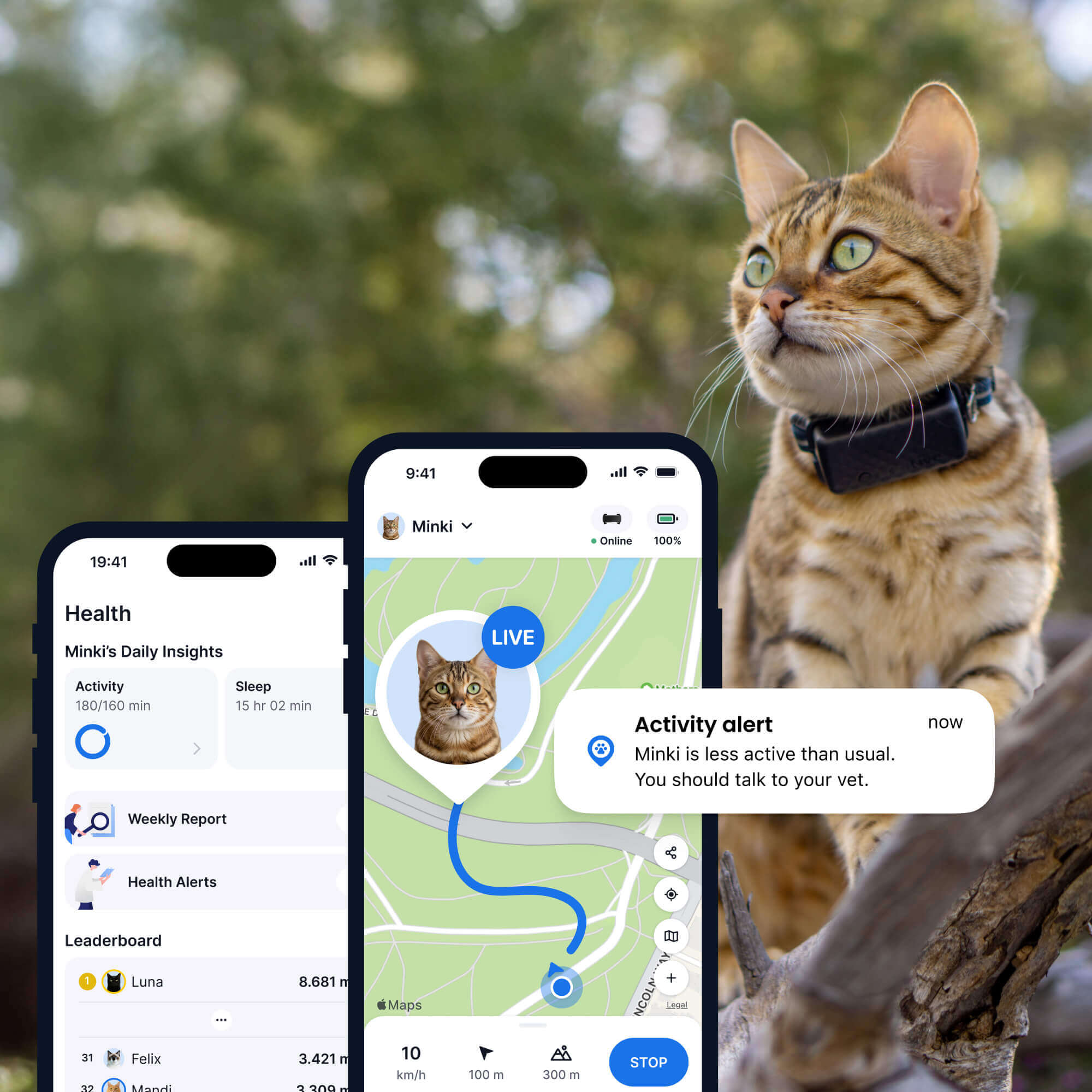How Much Does A Vet Visit Cost? (And Why Insurance Matters)
No one likes an unexpected bill - let alone one from your vet! But with rising costs and nearly 80% of UK vet websites not listing pricing details…how much does a vet visit cost? (And what's pet insurance got to do with it?)

Owning a dog or cat can be one of the most fulfilling experiences – but it does come with its responsibilities. One of the biggest: vet bills. But with rising costs (and a lack of pricing options listed online), how much does a vet visit cost? Especially if you’re not covered by pet insurance?
Turns out, factors like where you’re located and the type of practice all play a role. So let’s dive right into how much an unexpected vet bill might cost you – and why pet insurance might just be your key to peace of mind.

Find out where your cat spends their time.
Read moreHow much does a vet visit cost – on average?
Firstly, getting a basic vet appointment may only cost you between £30- £401 (though sometimes even more). However, your actual visit is likely to cost much more once your pet is treated. Secondly, you’re unlikely to see these prices listed on your vet’s website. The Competition and Markets Authority (CMA), have identified this as a serious concern for pet parents.2
This lack of transparency could be due to the fact that a whole bunch of factors influence your final bill. Bringing us to…
What influences the cost of vet bills?
Now like any loving dog or cat parent, you want to do what’s best for your buddy. (While also avoiding breaking the bank.) But as it turns out, the amount you do end up paying can depend on a whole range of factors. Including:
Your location
Your vet bills can vary significantly depending on where you live – at times, wildly – due to variations in cost of living across the country. In fact, the median consultation fee at a vet might cost you £32.50 if you’re based in Dumfries and Galloway – or £59 if you’re based in Bournemouth!3 Bigger cities like London will, of course, also be more expensive on average. But even being in the same city, you and a fellow pet parent might still find yourselves paying highly different fees. This is because the type of vet practice also plays a role in how much it might cost you.
The type of vet practice
In general, vet practices offering more complex treatments tend to charge more. (To maintain a bigger, more qualified staff, more expensive equipment, etc.) You’ll find this occurring most commonly among veterinary hospitals.4
Similarly, vet practices that are part of a larger corporate network might charge you more than a smaller independent practice. (Due to the demands of their shareholders.)
The type of appointment
In general, the shorter your appointment, the less it’s going to cost you. Which means you might have to pay more if you’re bringing in your dog or cat for:
- An emergency procedure
- Dental treatments
- An accident or injury
The price can also increase if you’re contacting your vet practice after office hours.
On the other hand, some vet practices might only charge you extra for consults. (While other procedures are comparatively less expensive – like routine checkups or vaccinations.
Your pet’s species, age, size & breed
When it comes to vet bills, your pet’s age, size, breed, and even species all play a role.
| Species | A dog might incur you a higher vet bill than a cat. |
| Size | A larger dog will likely cost you more than a small dog. |
| Age | Puppies tend to be more accident-prone than adult dogs. But at the same time, a senior dog or cat might need more checkups and preventative care as they grow older.. |
| Breed | Certain “pure breed” varieties of dogs and cats might incur you higher costs than mixed breeds. (Due to genetic health conditions they’re vulnerable to.) |
For example, the bigger your pet, the more expensive the vet bill may be.
Why? Because the larger your pet, the more likely it is your vet might need to prescribe you an increased amount of medication or anesthesia (if they need surgery.) All of which increase your overall costs.

Besides, certain pet breeds – like brachycephalic dogs and cats – might have health conditions from birth, including anatomical abnormalities.
Because of the shape of their skulls, they might experience sleep-disordered breathing (including sleep apnea) and other cardiovascular issues.
All of which is likely to require more frequent visits to the vets and, as a result, more vet bills.
Whether you’re covered by pet insurance (or not)
Some vet bills can cost you well over £1000. For example, spinal surgery can cost you nearly £10,000 for dog. Or a fracture on a cat over £8,000!5
💡But that’s if you haven’t taken out pet insurance – which can be your safety blanket against unexpected vet bills. In fact, according to Which?, vet care and other services for pets have massively increased their prices. Inflation has peaked at around 13.1% in June 2023. As of February 2024, this figure was still hovering around 10.7% .6 Similarly, the Association of British Insurers has reported that the average cost of a pet insurance claim has increased by 17.1% between 2015 and 2021 (from £721 to £848).7
(All reasons why choosing the right vet fee limit for your pet insurance policy is important.)
Pet insurance policies are designed to cover unexpected events like accidents or illnesses. They usually include a standard amount of vet fees as part of your policy. This may include routine consultations, but also other, more expensive procedures, like X-rays, surgeries, and medical examinations.
Read more: How Does Pet Insurance Work? A ‘Paw by Paw’ Breakdown
In fact, without being insured, UK pet parents needed to pay8:
- £4000 for a cat’s elbow surgery
- £2240 for a dog’s leg fracture
- £3150 for a dog’s gastrointestinal disease (from a parasitic infection)
💡Which is where picking the right insurance policy can be a lifesaver.
How much is a vet visit for a dog without insurance?
Some of the most common reasons for a dog visiting the vet include:
- Skin infections
- Mobility-affecting conditions, like arthritis and other musculoskeletal injuries
- Allergies
- Stomach & digestive problems
- Ear infections
Now depending on what you’ve brought your buddy in for, your vet bills might range from a basic consultation fee to a much higher bill. This depends on the treatment, medicines or even the operation that your dog might need. Besides, some basic maintenance and care services may not be covered by insurance. These include tick and flea control, microchipping, and even some vaccinations. In fact, some studies have found that just one-off vet bills comes on average to just under £393!9
So here’s the average cost of a vet visit for a dog – and how much it might cost you:
| Procedure | Average claim costs in the UK |
| An emergency procedure | £200-£300 |
| Dental treatments | £350 |
| Poisoning (mainly from chocolate, raisins, and medication built for humans) | £405.34-£749.97 |
| Diabetes | £201.76 |
| Cancer | £676.18 (not including ongoing radiation and chemotherapy treatments that might range between £5,000-£10,000.) |
| Arthritis | £405 |
Sources:
In fact, pet insurance can make all the difference between getting reimbursed for your out of pocket expenses – or having to bear these costs yourself.
Over time, this could amount to a huge sum – and a huger drain on your bank balance.
How much is a vet visit for a cat without insurance?
Much like dogs, your cat’s vet bills can depend on what you’re bringing them in for – and what health conditions they might already be facing. Some of the common reasons cats end up at the vet’s include:
- Urinary tract infections (UTIs)
- Diarrhea/vomiting
- Injuries
So here’s a breakdown of the average costs you might expect:
| Procedure | Average claim costs in the UK |
| An emergency procedure | £200-£300 |
| Dental treatments | £350 |
| Urinary Tract Infections (UTIs) | £353.67 |
| Diabetes | £189.40 |
Sources:
Some insurance policies don’t cover procedures like dental treatment or euthanasia. Make sure to check yours carefully before buying.
Steps you can take to reduce your vet expenses
Is your dog or cat accident-prone, an escape artist, or vulnerable to certain health risks? Understanding these factors can help you better understand why you might need to take them to the vet. They can best help you uncover your pet’s medical history, habits, and what to expect. Including:
- When to get your pet their next round of vaccinations
- How to monitor them for signs of illness, pain, or discomfort
- How to care for their teeth, skin, and fur to prevent infections down the line
Besides – no matter if you’ve got an indoor or outdoor dog or cat, there’s always the likelihood they might escape from home, run off on a walk, or wander off a bit too far from safety. With its real-time tracking and unlimited range, your trusty Tractive GPS helps you figure out where your dog or cat is – with just a glance at your phone.

With your Tractive device, you can:
- Set up a “safe zone” around your home or backyard and get an instant escape alert on your phone the minute your dog or cat sneaks past it.
- Figure out your pet’s favorite hangout spots (whether that’s your neighbor’s backyard, the train station down the street, or even the next district!)
- Locate your pet at close range (like if they’re hiding under your bed) with our Bluetooth-powered Radar Mode or even Light and Sound features.
Even better, Tractive’s Health Monitoring features can help you spot potential health issues early. With its built-in motion detector, it keeps track of your pet’s daily activity, sleep, and even vital signs. So if there’s a weird change in their daily active minutes or sleep quality, you’ll get a Health Alert. This prompts you to get them checked up at the vet much in advance. (Before any underlying health issue worsens.)

This post was written by Frank Speight, a veteran of the insurance industry, who’s worked in financial services for more than 30 years across Europe and Asia. Besides negotiating the best possible insurance products for pet parents, he’s also dad to two Golden Retrievers – who have a larger following on Instagram than him!
When he’s not busy with Tractive, you can find him walking his dogs on the beach, managing their social media accounts, or playing the guitar.




